Neural mechanisms of the temporal response of cortical neurons to intracortical microstimulation
- PMID: 38492885
- PMCID: PMC11090107
- DOI: 10.1016/j.brs.2024.03.012
Neural mechanisms of the temporal response of cortical neurons to intracortical microstimulation
Abstract
Background: Intracortical microstimulation (ICMS) is used to map neuronal circuitry in the brain and restore lost sensory function, including vision, hearing, and somatosensation. The temporal response of cortical neurons to single pulse ICMS is remarkably stereotyped and comprises short latency excitation followed by prolonged inhibition and, in some cases, rebound excitation. However, the neural origin of the different response components to ICMS are poorly understood, and the interactions between the three response components during trains of ICMS pulses remains unclear.
Objective: We used computational modeling to determine the mechanisms contributing to the temporal response to ICMS in model cortical neurons.
Methods: We implemented a biophysically based computational model of a cortical column comprising neurons with realistic morphology and synapses and quantified the temporal response of cortical neurons to different ICMS protocols. We characterized the temporal responses to single pulse ICMS across stimulation intensities and inhibitory (GABA-B/GABA-A) synaptic strengths. To probe interactions between response components, we quantified the response to paired pulse ICMS at different inter-pulse intervals and the response to short trains at different stimulation frequencies. Finally, we evaluated the performance of biomimetic ICMS trains in evoking sustained neural responses.
Results: Single pulse ICMS evoked short latency excitation followed by a period of inhibition, but model neurons did not exhibit post-inhibitory excitation. The strength of short latency excitation increased and the duration of inhibition increased with increased stimulation amplitude. Prolonged inhibition resulted from both after-hyperpolarization currents and GABA-B synaptic transmission. During the paired pulse protocol, the strength of short latency excitation evoked by a test pulse decreased marginally compared to those evoked by a single pulse for interpulse intervals (IPI) < 100 m s. Further, the duration of inhibition evoked by the test pulse was prolonged compared to single pulse for IPIs <50 m s and was not predicted by linear superposition of individual inhibitory responses. For IPIs>50 m s, the duration of inhibition evoked by the test pulse was comparable to those evoked by a single pulse. Short ICMS trains evoked repetitive excitatory responses against a background of inhibition. However, the strength of the repetitive excitatory response declined during ICMS at higher frequencies. Further, the duration of inhibition at the cessation of ICMS at higher frequencies was prolonged compared to the duration following a single pulse. Biomimetic pulse trains evoked comparable neural response between the onset and offset phases despite the presence of stimulation induced inhibition.
Conclusions: The cortical column model replicated the short latency excitation and long-lasting inhibitory components of the stereotyped neural response documented in experimental studies of ICMS. Both cellular and synaptic mechanisms influenced the response components generated by ICMS. The non-linear interactions between response components resulted in dynamic ICMS-evoked neural activity and may play an important role in mediating the ICMS-induced precepts.
Keywords: Cortical column; Intracortical microstimulation; Long-lasting inhibition; Neural model; Rebound excitation; Short latency excitation.
Copyright © 2024 The Authors. Published by Elsevier Inc. All rights reserved.
Conflict of interest statement
Declaration of competing interest The authors declare that they have no known competing financial interests or personal relationships that could have appeared to influence the work reported in this paper.
Figures
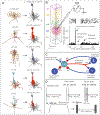

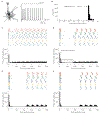
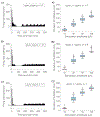

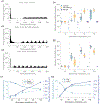
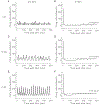
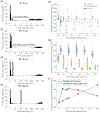
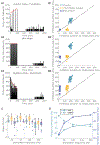
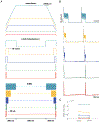
Similar articles
-
Dynamic amplitude modulation of microstimulation evokes biomimetic onset and offset transients and reduces depression of evoked calcium responses in sensory cortices.Brain Stimul. 2023 May-Jun;16(3):939-965. doi: 10.1016/j.brs.2023.05.013. Epub 2023 May 25. Brain Stimul. 2023. PMID: 37244370 Free PMC article.
-
Characterizing the short-latency evoked response to intracortical microstimulation across a multi-electrode array.J Neural Eng. 2022 Apr 20;19(2):10.1088/1741-2552/ac63e8. doi: 10.1088/1741-2552/ac63e8. J Neural Eng. 2022. PMID: 35378515 Free PMC article.
-
A repetitive intracortical microstimulation pattern induces long-lasting synaptic depression in brain slices of the rat primary somatosensory cortex.Exp Brain Res. 2000 Dec;135(3):300-10. doi: 10.1007/s002210000530. Exp Brain Res. 2000. PMID: 11146808
-
Stoney vs. Histed: Quantifying the spatial effects of intracortical microstimulation.Brain Stimul. 2022 Jan-Feb;15(1):141-151. doi: 10.1016/j.brs.2021.11.015. Epub 2021 Nov 30. Brain Stimul. 2022. PMID: 34861412 Free PMC article.
-
Neural hijacking: action of high-frequency electrical stimulation on cortical circuits.Neuroscientist. 2013 Oct;19(5):434-41. doi: 10.1177/1073858412458368. Epub 2012 Sep 10. Neuroscientist. 2013. PMID: 22968640 Free PMC article. Review.
Cited by
-
Tactile edges and motion via patterned microstimulation of the human somatosensory cortex.Science. 2025 Jan 17;387(6731):315-322. doi: 10.1126/science.adq5978. Epub 2025 Jan 16. Science. 2025. PMID: 39818881
-
Cortical dynamics in hand/forelimb S1 and M1 evoked by brief photostimulation of the mouse's hand.Elife. 2025 May 19;14:RP105112. doi: 10.7554/eLife.105112. Elife. 2025. PMID: 40387088 Free PMC article.
-
Cortical dynamics in hand/forelimb S1 and M1 evoked by brief photostimulation of the mouse's hand.bioRxiv [Preprint]. 2025 Mar 13:2024.12.02.626335. doi: 10.1101/2024.12.02.626335. bioRxiv. 2025. Update in: Elife. 2025 May 19;14:RP105112. doi: 10.7554/eLife.105112. PMID: 39677687 Free PMC article. Updated. Preprint.
-
Degradation-aware neural imputation: Advancing decoding stability in brain machine interfaces.APL Bioeng. 2025 Apr 16;9(2):026106. doi: 10.1063/5.0250296. eCollection 2025 Jun. APL Bioeng. 2025. PMID: 40247859 Free PMC article.
References
-
- Butovas S, Schwarz C. Spatiotemporal effects of microstimulation in rat neocortex: a parametric study using multielectrode recordings. J Neurophysiol 2003;90(5): 3024–39. - PubMed
-
- Logothetis NK, et al. The effects of electrical microstimulation on cortical signal propagation. Nat Neurosci 2010;13(10):1283. - PubMed
-
- Flesher SN, et al. Intracortical microstimulation of human somatosensory cortex. Sci Transl Med 2016;8(361):361ra141. 361ra141. - PubMed
Publication types
MeSH terms
Grants and funding
LinkOut - more resources
Full Text Sources

